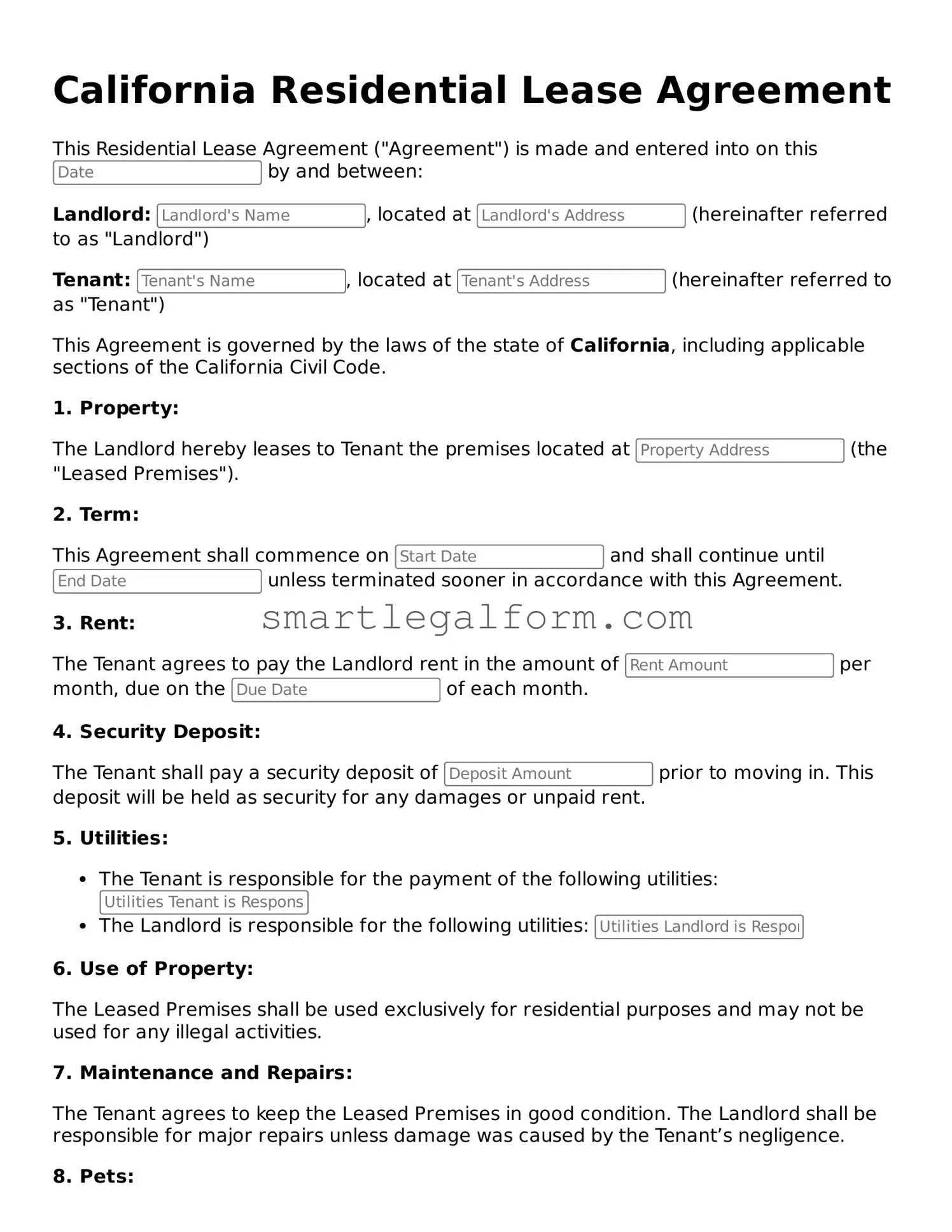Printable California Residential Lease Agreement Document
The California Residential Lease Agreement is a legal document that outlines the terms and conditions between a landlord and a tenant for renting residential property in California. This agreement serves to protect the rights of both parties while clearly defining their responsibilities. Understanding this form is crucial for a smooth rental experience, so be sure to fill it out accurately by clicking the button below.
Fill Out Your Form Online
